In this Agile Learning Series blogs, we will introduce the Scrum topic in this blog.
What is Scrum?
Scrum is a framework for developing and sustaining complex products.
-- The Scrum Guide
Quick View of Scrum Framework
Scrum is a simple framework with a defined set of roles, events, artifacts and set of rules for more natural understanding and implementation.
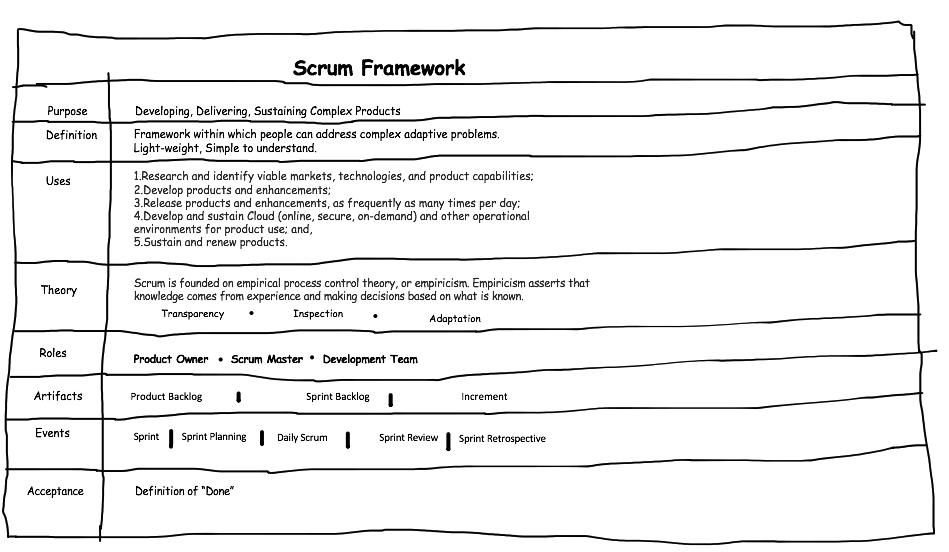
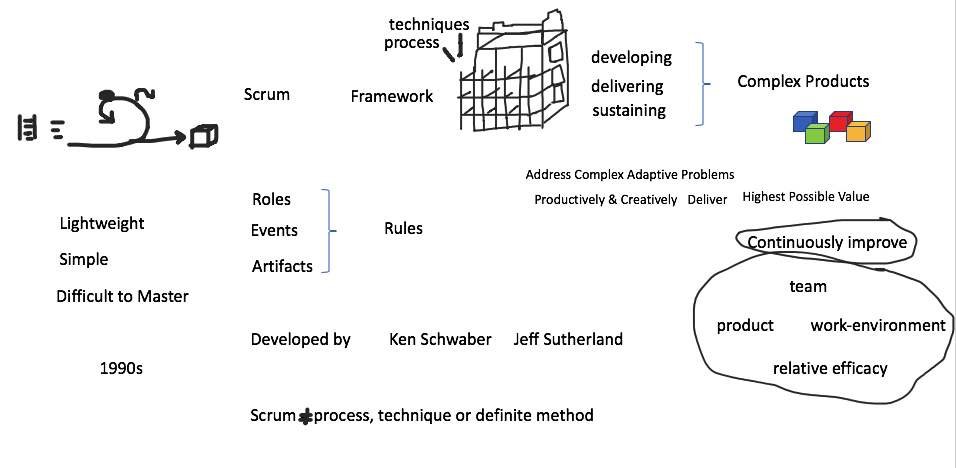
Why Scrum?
Modern software development is very complex and to address the complex adaptive problems, Scrum provides a minimalistic approach for an iterative, incremental and adaptive approach to solve some of the complex issues. The Problems that modern software and software-based solution organizations explaining does not fall under known problem space. For reference, please find the "Stacey matrix" which describes, "What," "How" and also we could take "Who" from this concept.
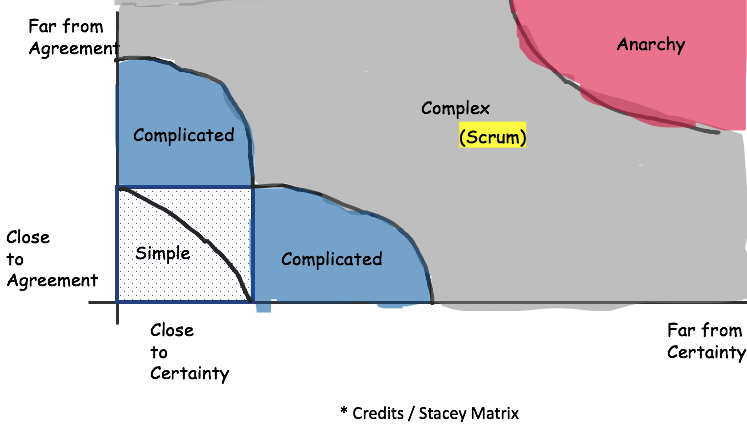
Sequential/Waterfall vs Scrum
We still have the sequential model of software development as a default approach, and also the comparison of sequential with Scrum model reveals the iterative, incremental and adaptive approaches generates much faster feedback and learning cycles, by delivering business-value to customers through a shorter-iterative development process delivering incremental value.
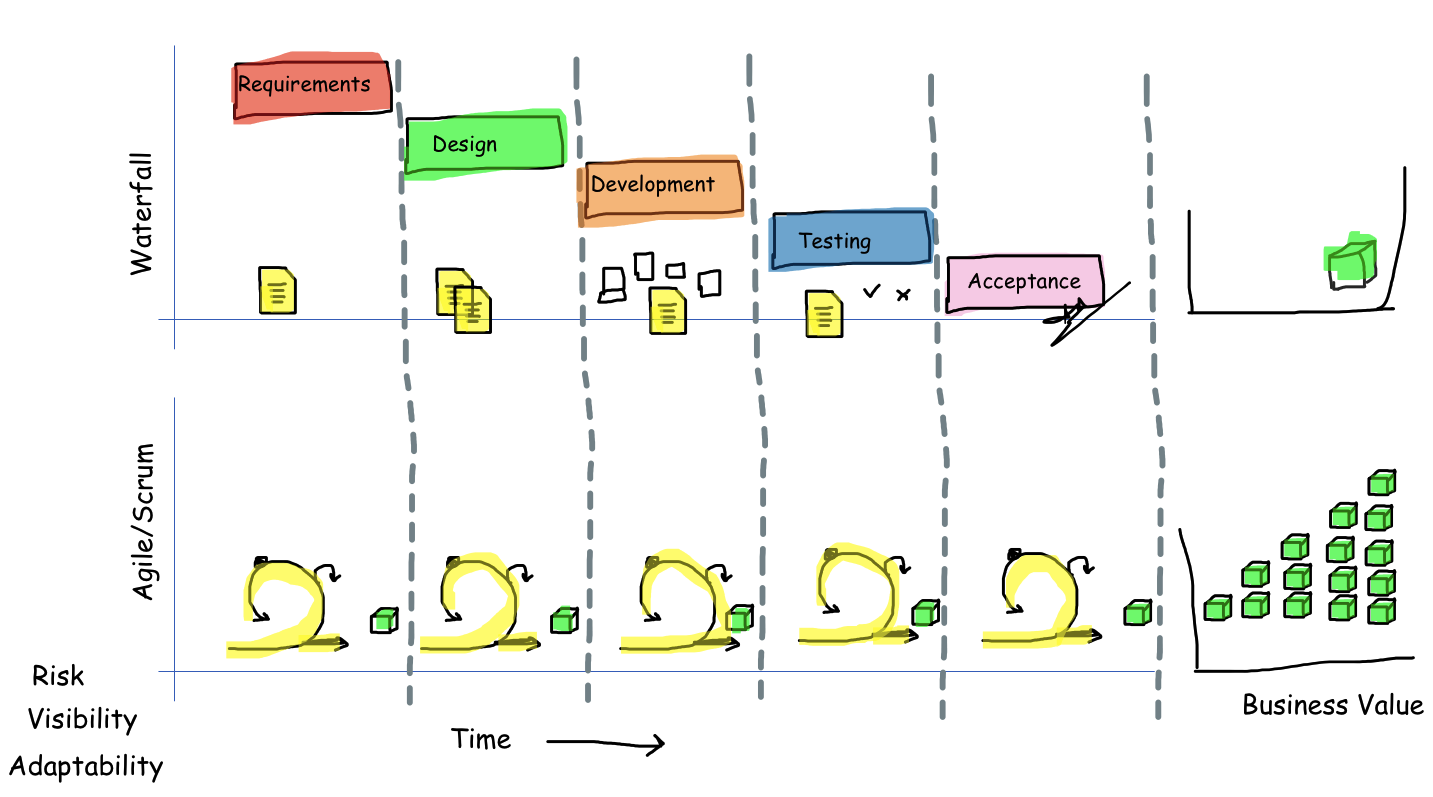
History of Scrum
An HBR paper published in 1986 by Hirotaka Takeuchi and Ikujiro Nonaka described the suitability of "Scrum" approach to solving modern organization problems. The Authors described the research and the benefits of adopting an adaptive "holistic" approach to problem-solving like Scrum in Rugby.
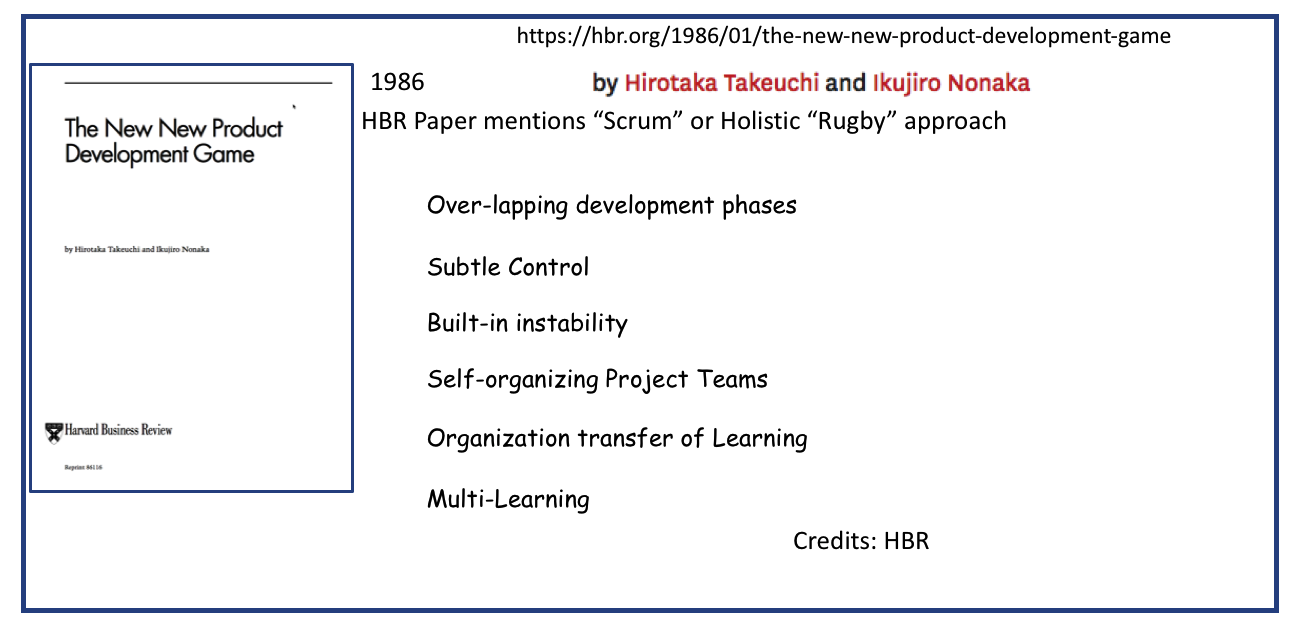
The book "Wicked Problems, Righteous Solutions" also talked about the Scrum approach. Later Scrum approach was developed by Ken Schwaber and Jeff Sutherland (Please refer to Scrum Guide for the list of people who developed the Scrum approach) and presented in the OOPSLA Conference.
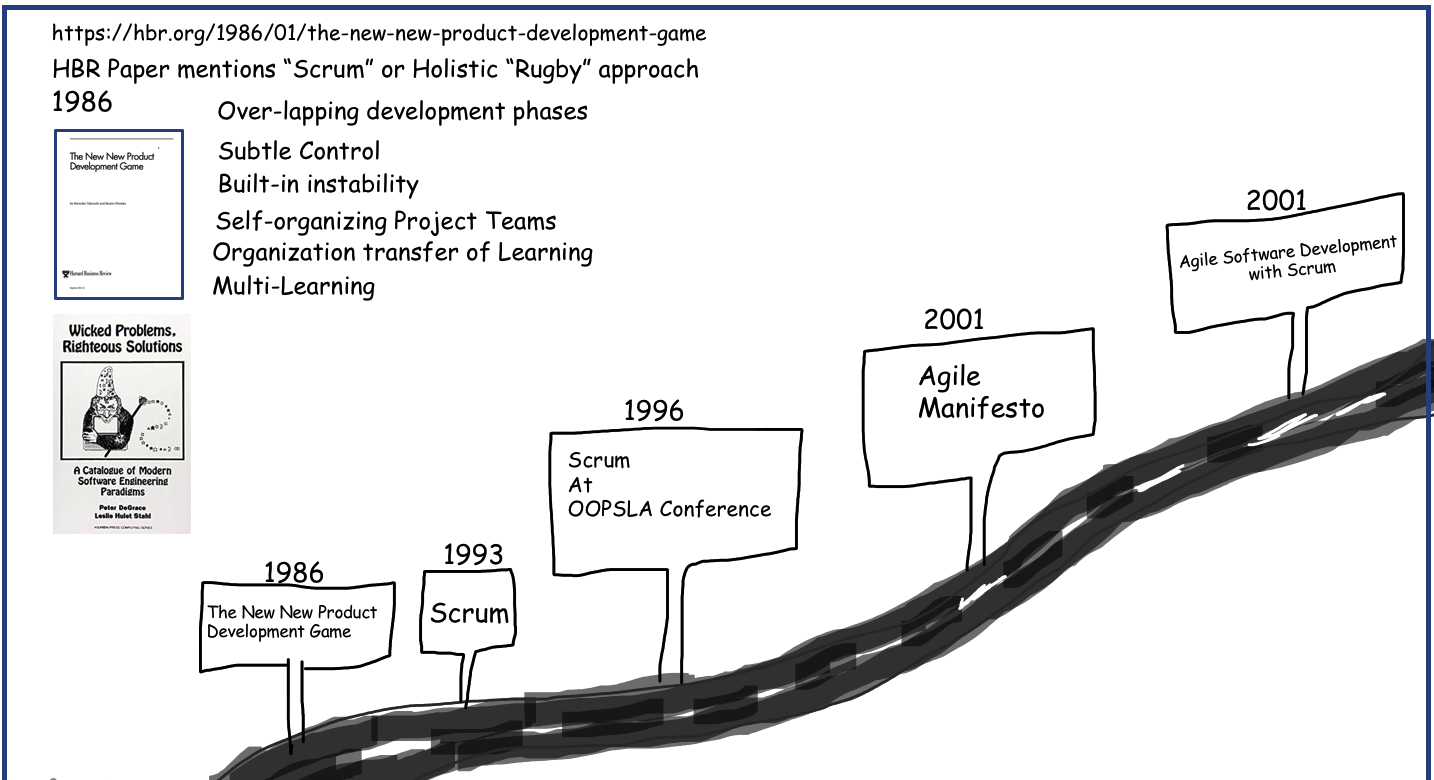
Moreover, Scrum is one of the early agile practices that transform the traditional software development approach into a more adaptive approach and a first voice for creating a mindset shift for minimalistic (the lean type of plan) for software development along with XP (Xtreme Programming).
Scrum Workflow
Scrum Workflow is a simple workflow that helps to identify value, prioritize, sequence them through a flow process with a defined timebox (1-4) weeks and deliver in a consistent, confirmed (Definition-of-Done) practice.
ScrumMaster: Master of Scrum
Product Owner: Owner of the Product
Development Team: Team members that help deliver value by pulling the prioritized list of items from product backlog and apply required engineering practices to deliver value to their customers.
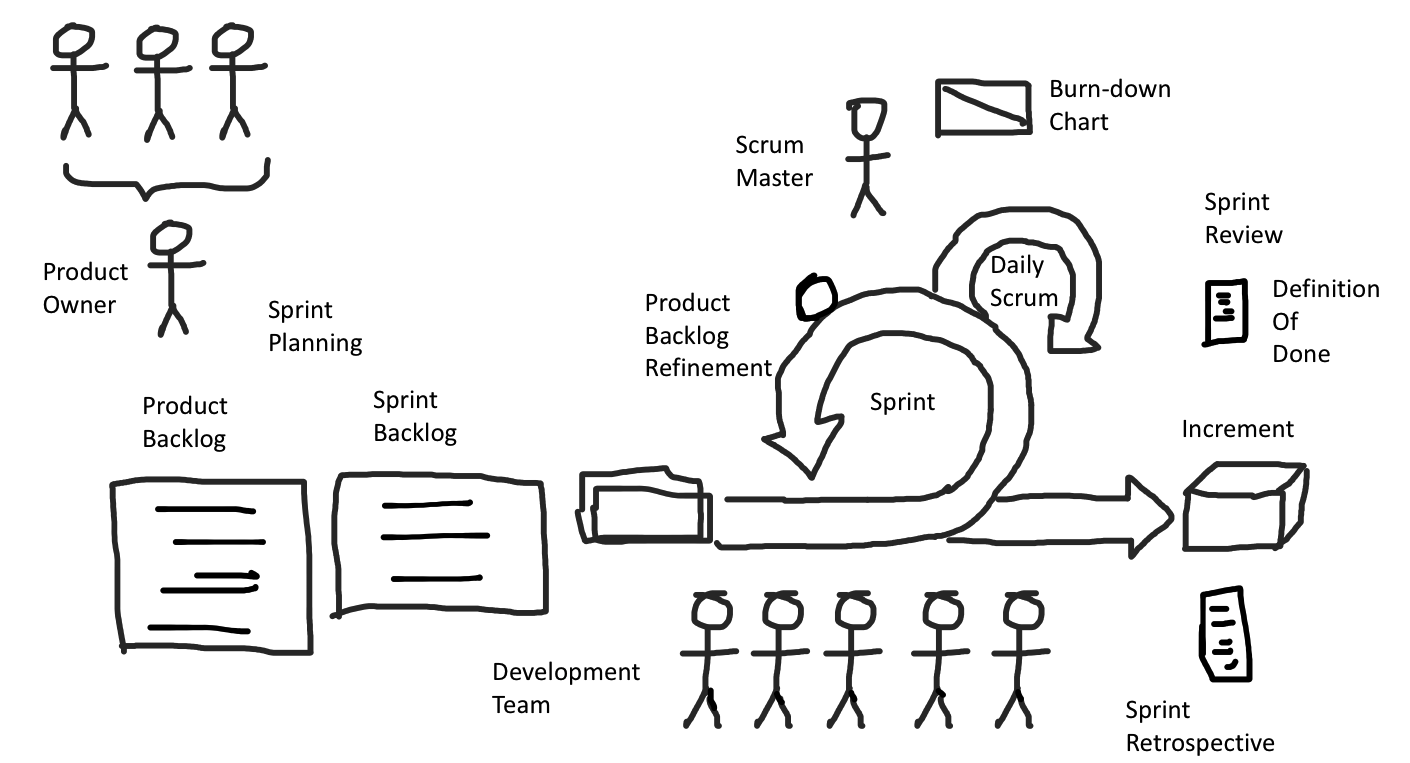
Scrum Provides the following
Roles: PO, SM, Team
Events: Sprint, Sprint Planning, Daily Scrum, Sprint Review, Sprint Retrospective
Artifacts: Product Backlog, Sprint Backlog, Increment
The idea of Scrum is to be minimalistic on the process, product to create the required deliverables in a short timescale. A cadence based approach to make unpredictable events into more predictable ones.
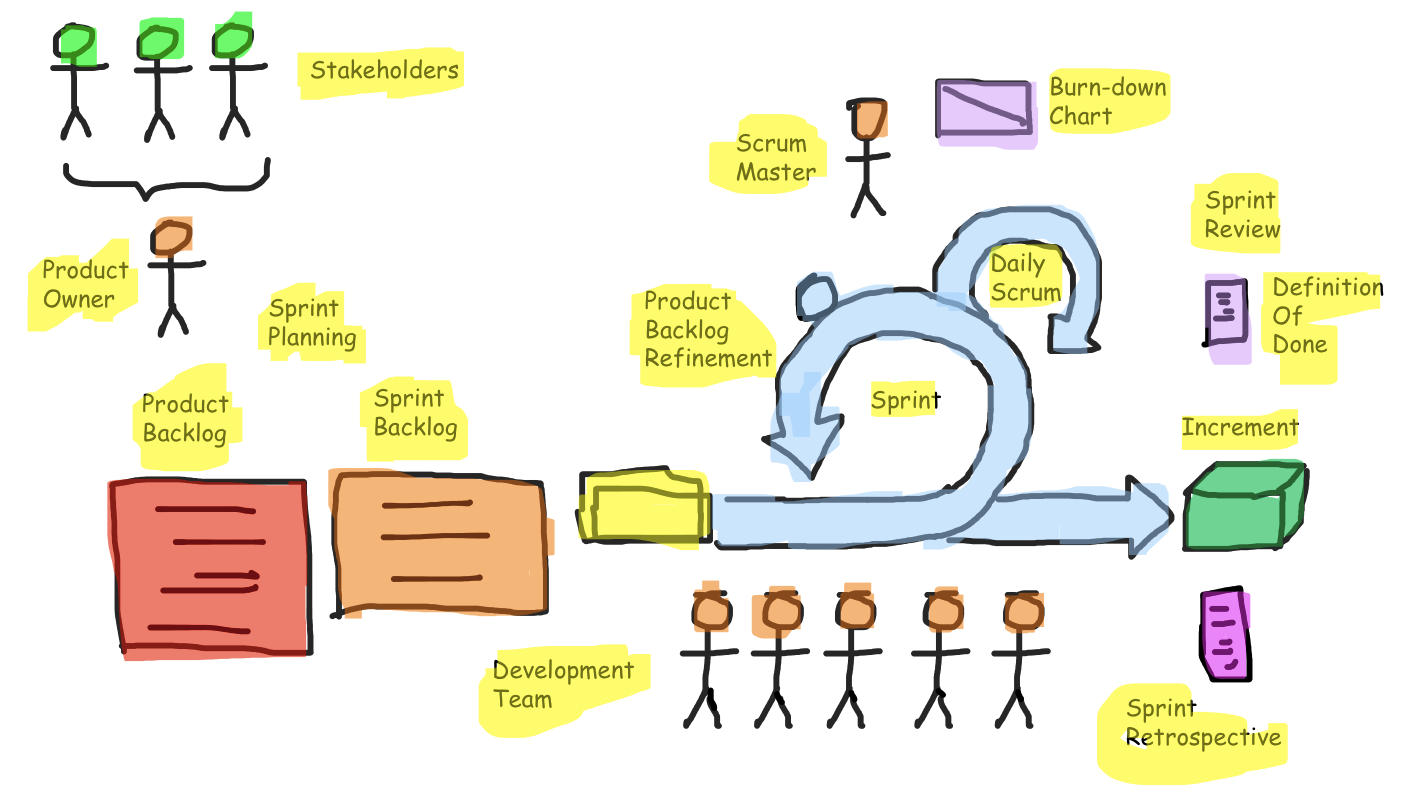
Scrum Roles: Three simple, effective roles to get end-to-end flow perspective.
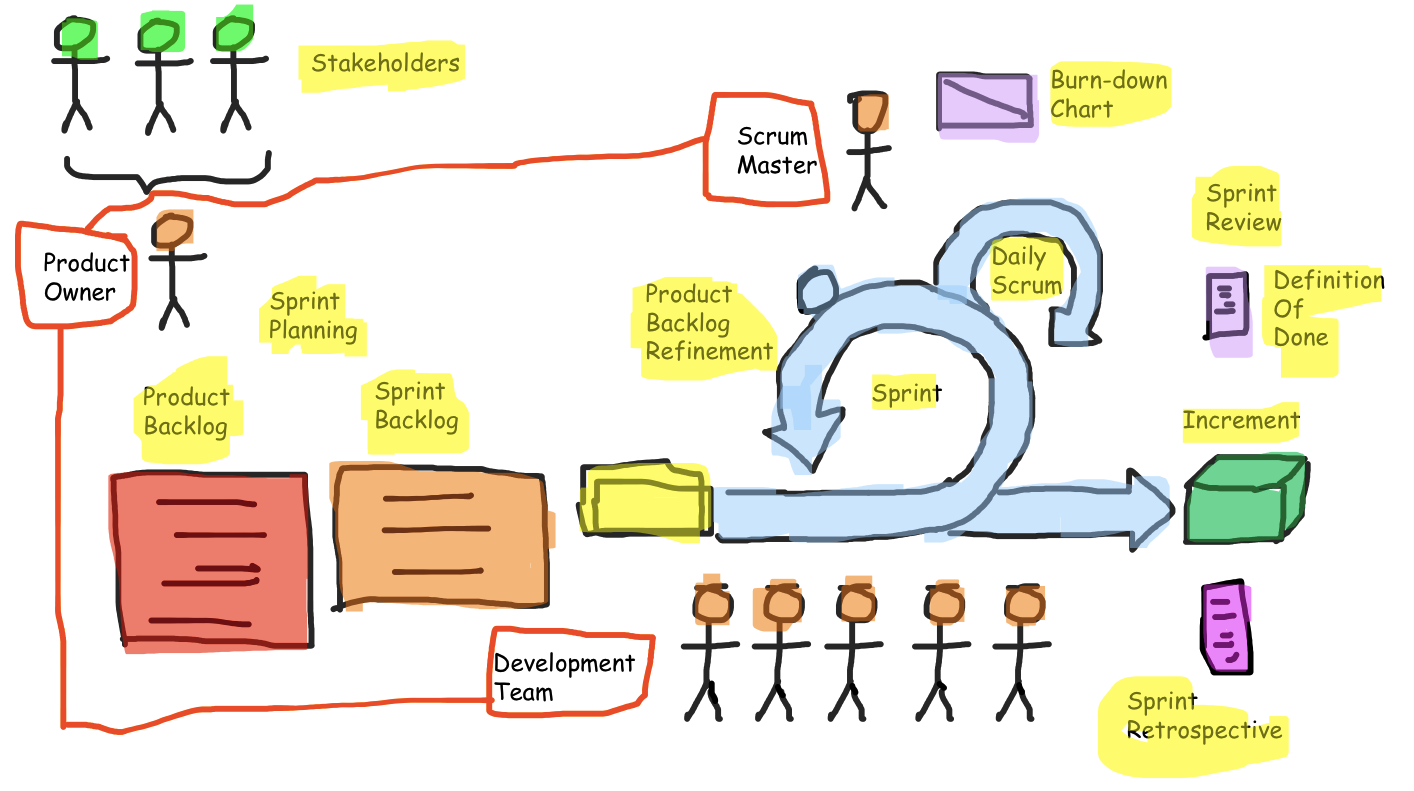
Scrum Events: Minimalistic set of Events
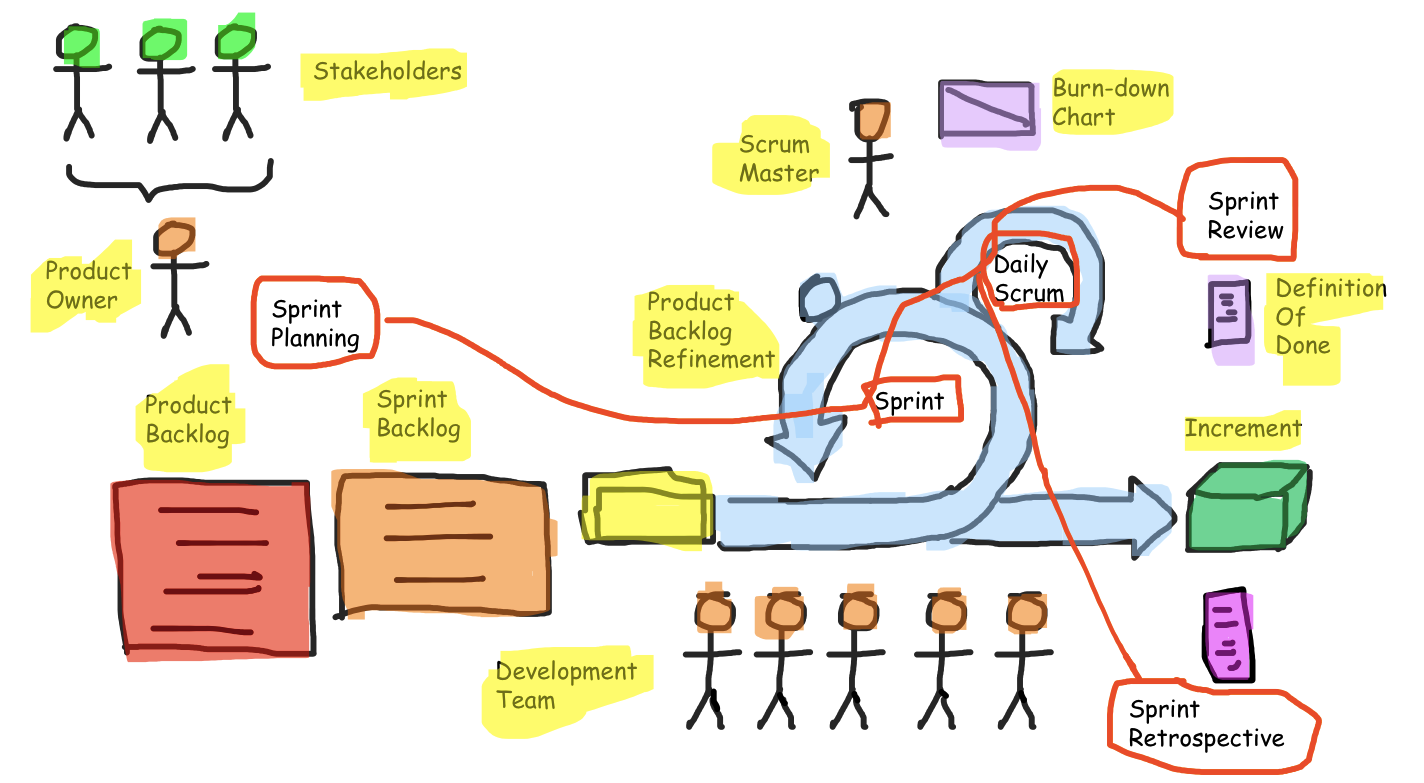
Scrum Artifacts: The required set of artifacts for faster value delivery.
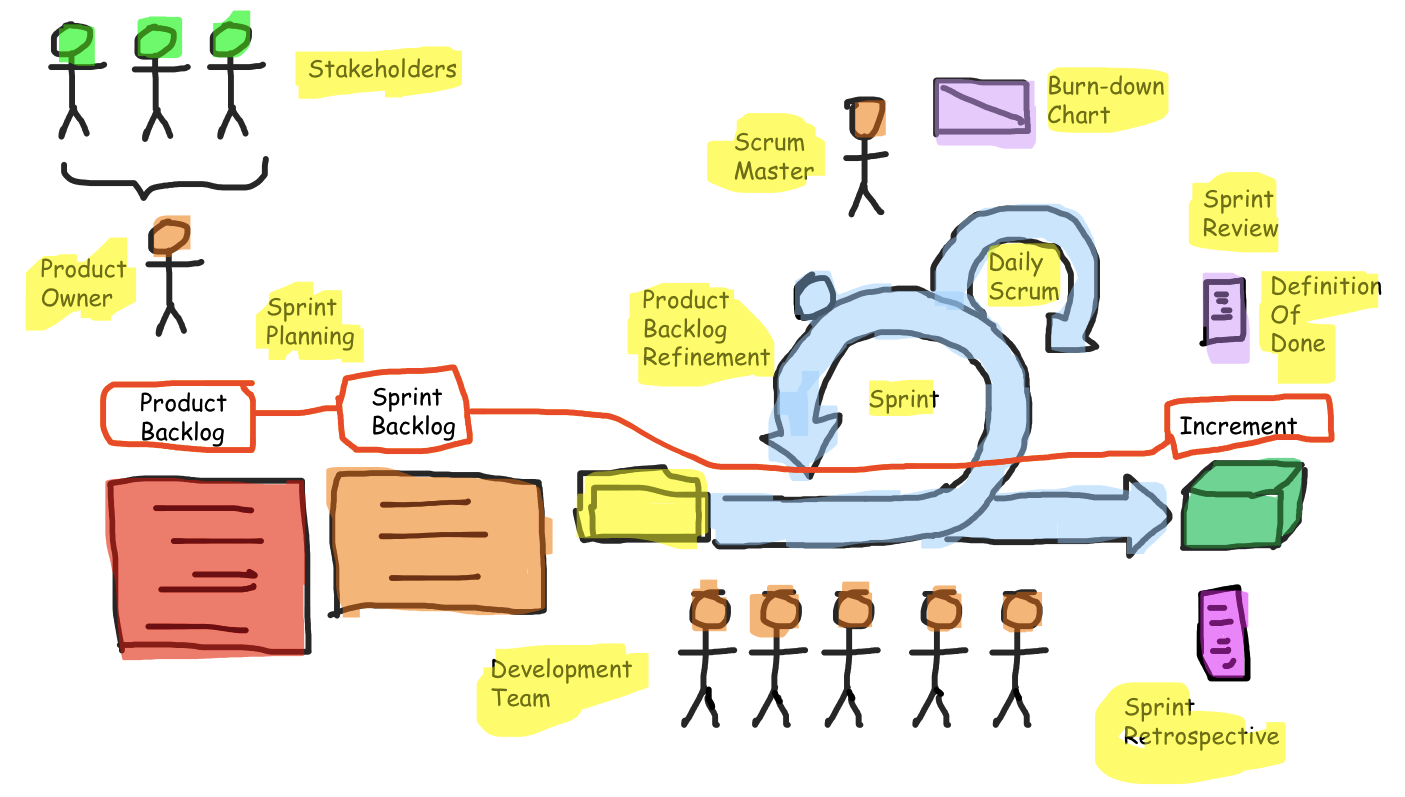
Scrum, An Empirical approach to address complex-adaptive problems.
The Scrum empirical approach helps to bring the right level of transparency through the roles, artifacts, and events, by which the organization can understand the impediments for resolving them and focus on value delivery.
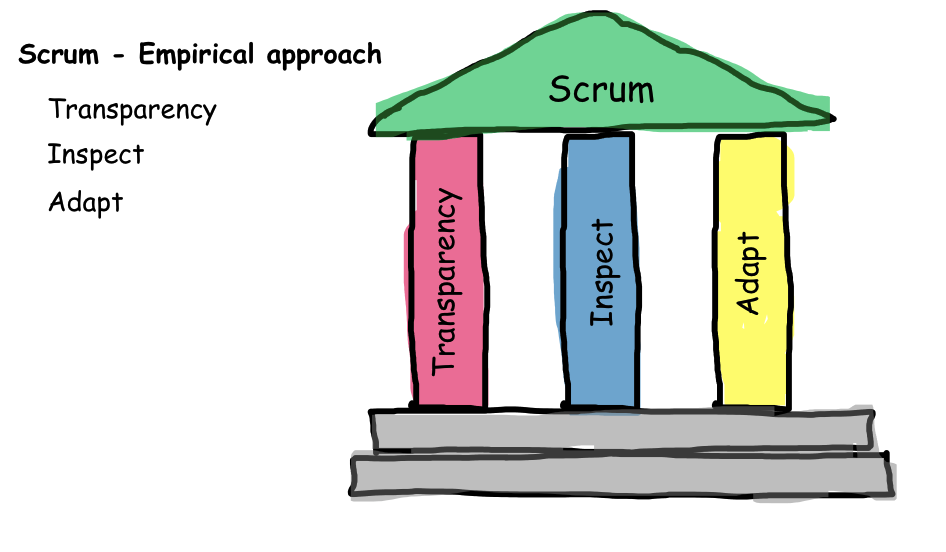
The Scrum Team Values
Scrum Team = Product Owner + Scrum Master + Development Team enables a values-based approach (Courage, Focus, Openness, Respect, Commitment)
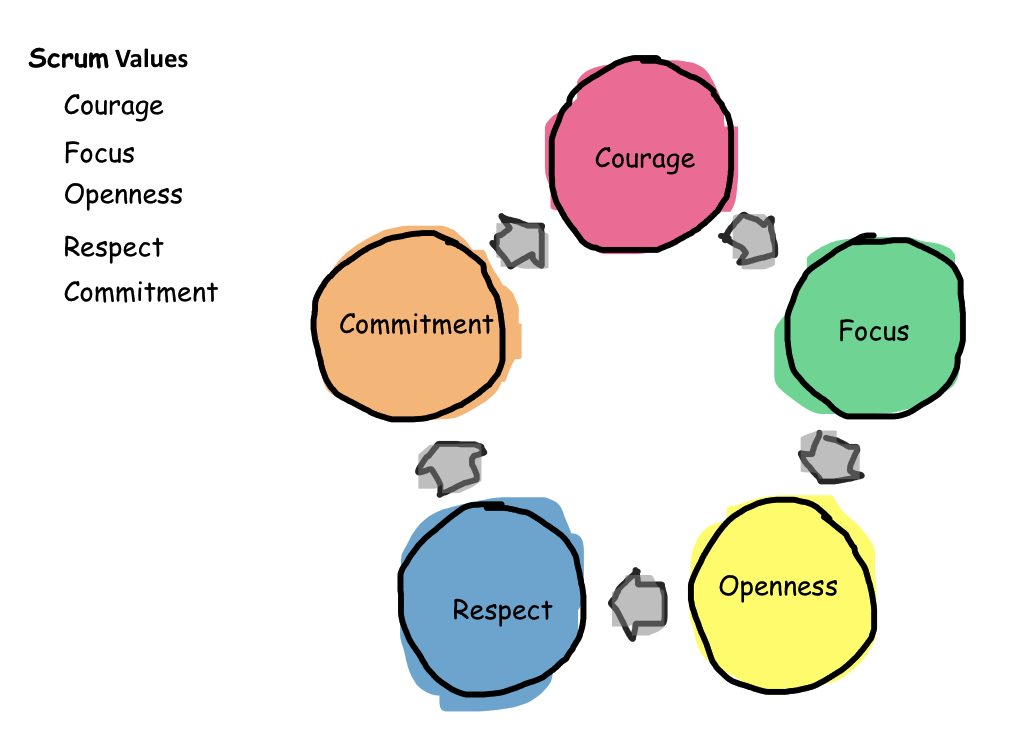
Backlog Based Pull-System approach
The Backlog enables a suitable agile based approach like user stories or other collaborative ways of working with actual user & customer needs. The requirements are discussed with concepts like User stories and size is determined by relative estimation (complexity). These are not recommended by Scrum but comes from the agile software development approaches that Scrum encourages to adopt within its framework.
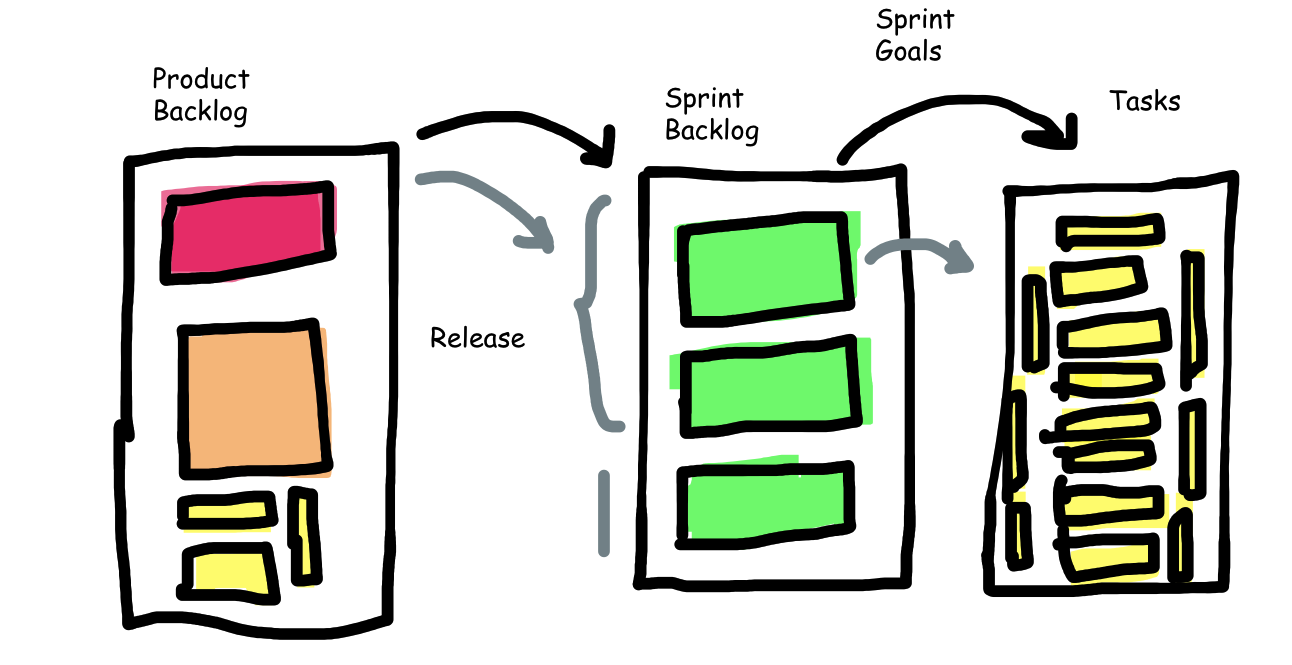
Scrum Release Flow (Not in the scope of Scrum Definition)
Scrum Team pulls product backlog items and may utilize an adaptive approach.
Small Releases (1-2 Sprints): Either keeping focus for dynamic requirements, i.e., Approx 2 sprints worth of work is planned to welcome changing requirements
Release (3-4 Sprints): based planning: Approx visibility to releases for multiple teams in the case of dependencies management and based on planning horizon.
* Release on Demand
* Release Every Sprint
* Multi-Sprint Release
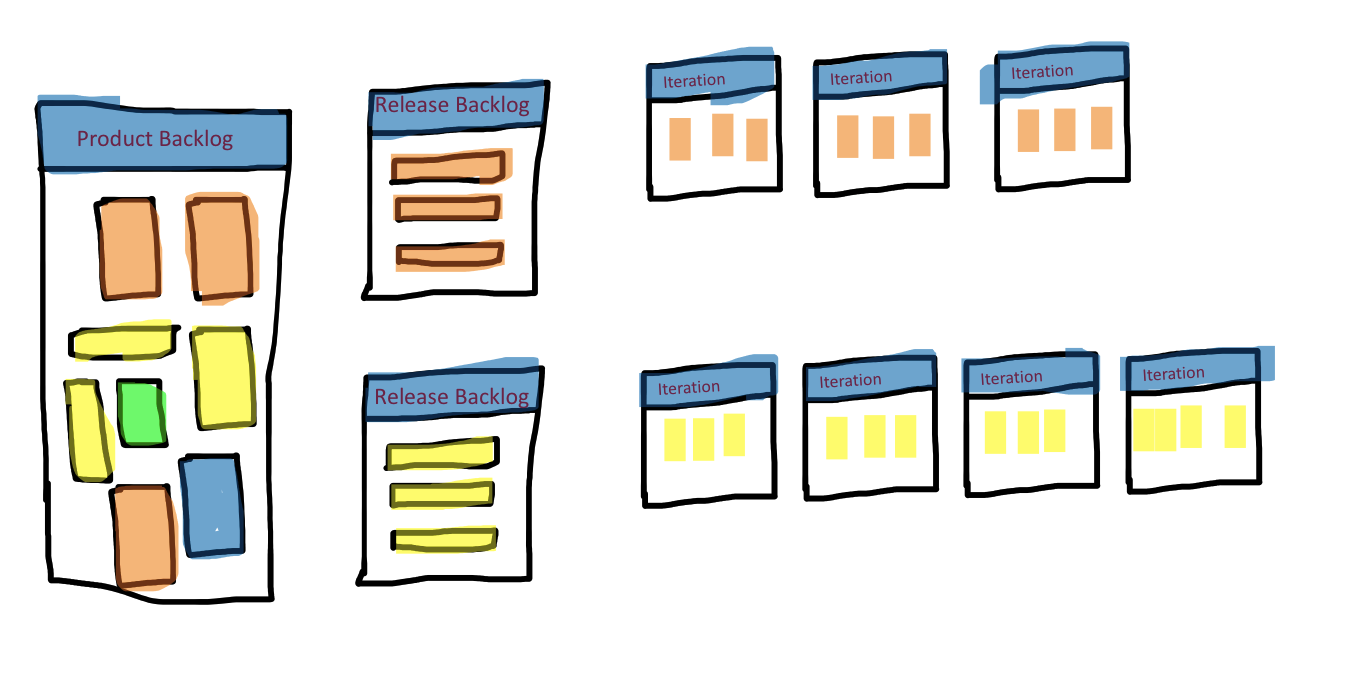
Scrum Adoption / Agile Transformation
Scrum adoption can be simple or extremely difficult based on the organization's mindset to adopt agile and Scrum mindset. The usual approach is to start with foundation level training in explaining, what, why and how? Moreover, help to adopt the Scrum practice through a Scrum Master.
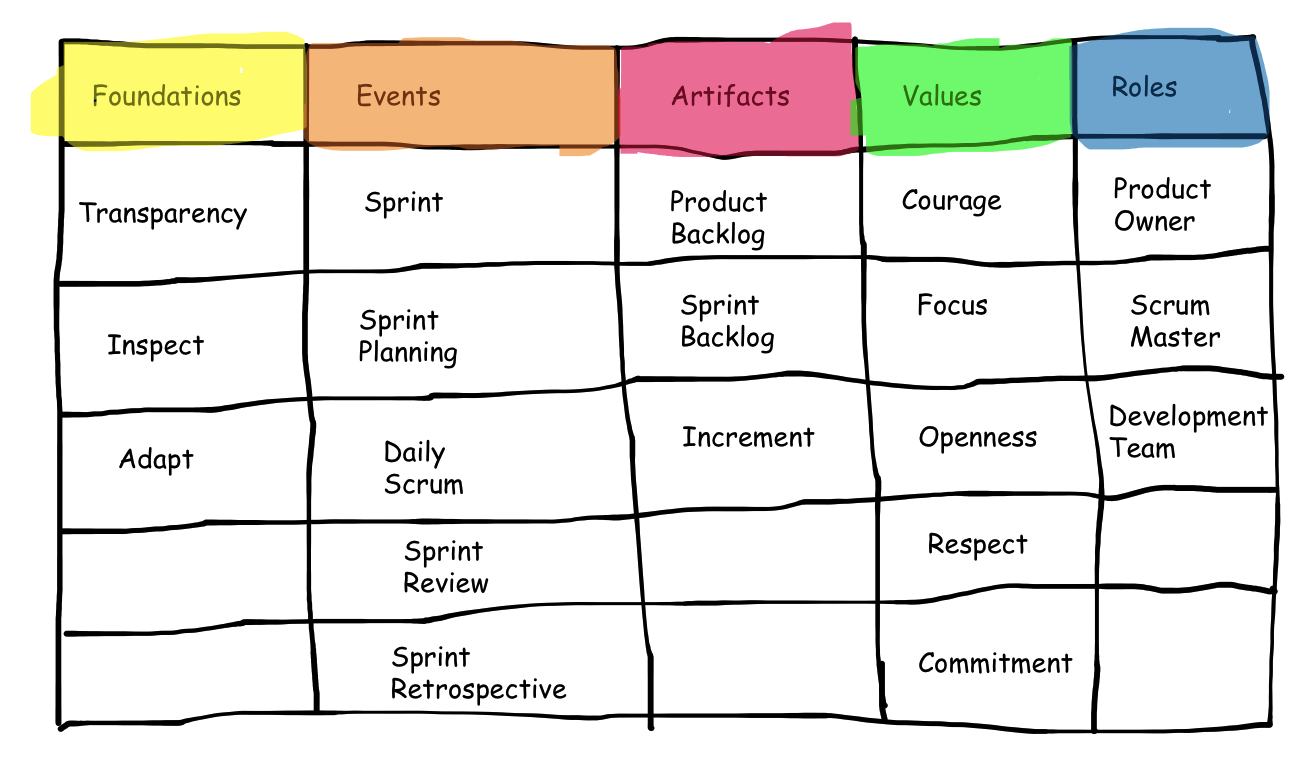
Scrum as a Foundation for Agile Organization
Many scaling agile frameworks and scaling agile approaches utilize Scrum approach because Scrum provides one of the important building block of an agile organization - the cadence and synchronization, prioritization and overlapping development (concurrent engineering), framework approach where we can include other processes and practices with Scrum.
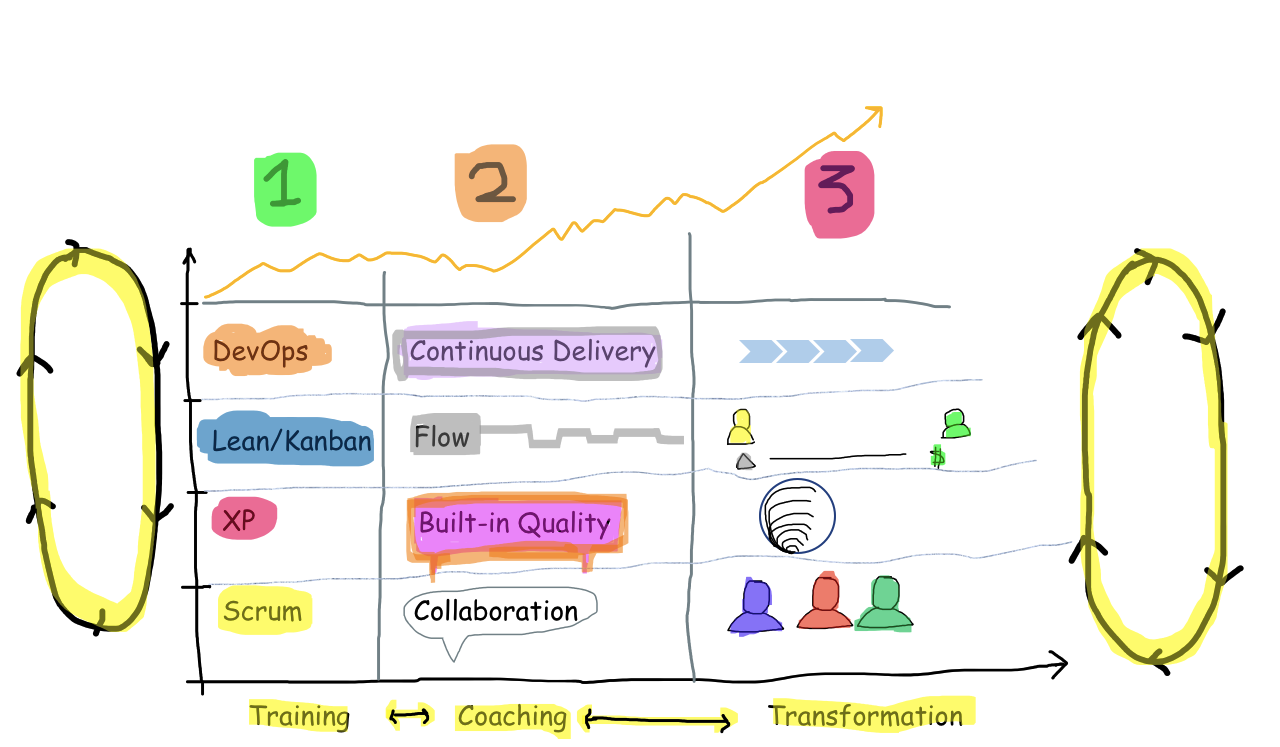

Temenos Effect Gathering 2018- Bengaluru, India(Dec 29, 2018)
An event dedicated to the idea of personal mastery, for nurturing your beautiful self, for change agents and leaders to become their true selves.
For more details, visit our website: https://www.visiontemenos.com/events